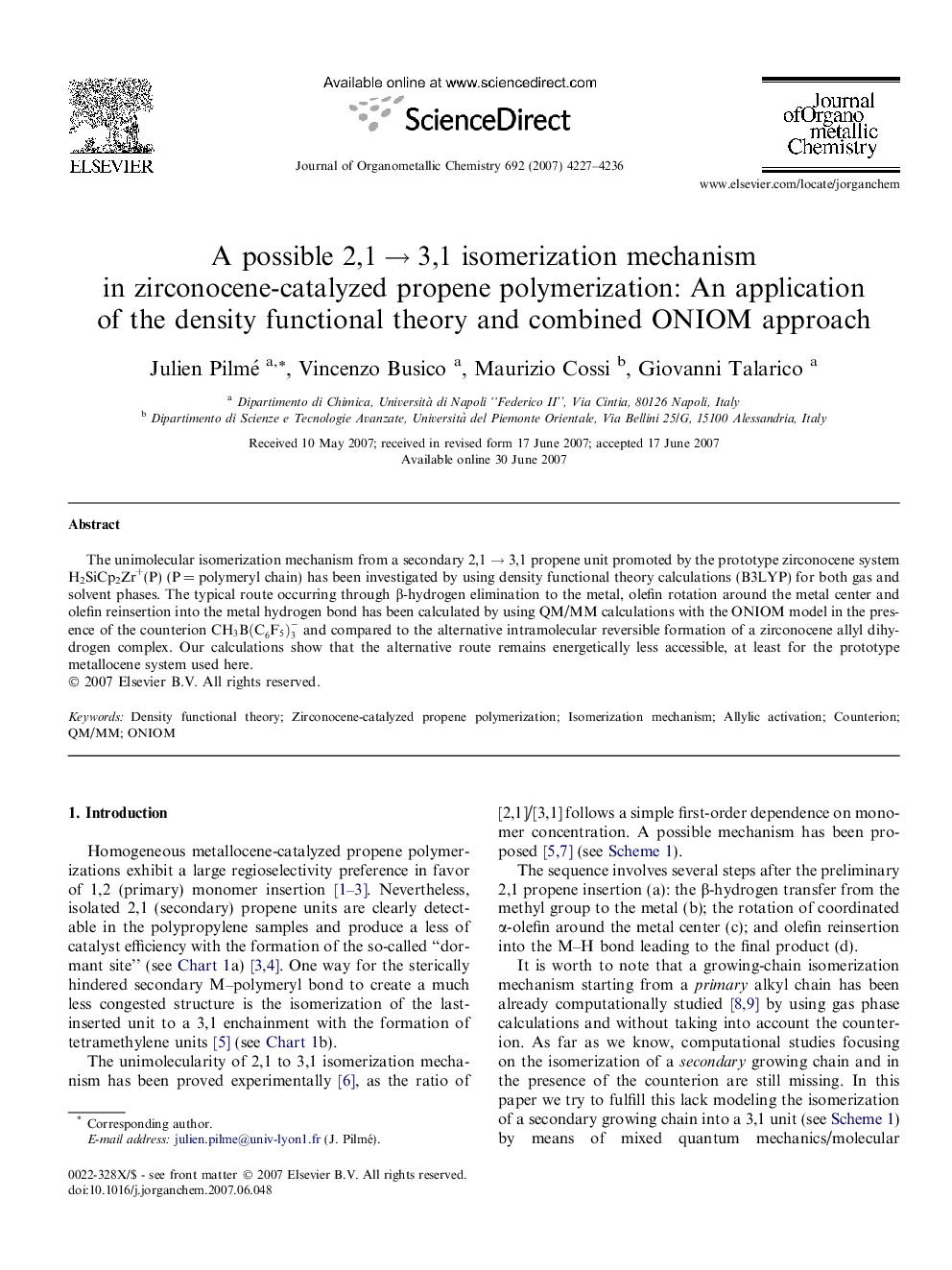| Article ID | Journal | Published Year | Pages | File Type |
|---|---|---|---|---|
| 1325042 | Journal of Organometallic Chemistry | 2007 | 10 Pages |
The unimolecular isomerization mechanism from a secondary 2,1 → 3,1 propene unit promoted by the prototype zirconocene system H2SiCp2Zr+(P) (P = polymeryl chain) has been investigated by using density functional theory calculations (B3LYP) for both gas and solvent phases. The typical route occurring through β-hydrogen elimination to the metal, olefin rotation around the metal center and olefin reinsertion into the metal hydrogen bond has been calculated by using QM/MM calculations with the ONIOM model in the presence of the counterion CH3B(C6F5)3- and compared to the alternative intramolecular reversible formation of a zirconocene allyl dihydrogen complex. Our calculations show that the alternative route remains energetically less accessible, at least for the prototype metallocene system used here.
Graphical abstractA possible 2,1 (secondary) → 3,1 unimolecular isomerization mechanism promoted by a prototype of zirconocene alkyl complex H2SiCp2Zr+(s -butyl) has been found energetically accessible both in absence and in presence of the typical counterion CH3B(C6F5)3-.Figure optionsDownload full-size imageDownload as PowerPoint slide
